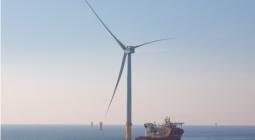UK offshore wind is no longer a bargain. But it’s still better than the alternatives
The good news is that the government has an offshore wind strategy again, something that was in doubt after the last auction flopped by producing no bids from developers. The maximum price the state is prepared to pay for a windfarm’s output for 15 years has been set at £73 a megawatt hour for the 2024 auction, a level that should be high enough to grab attention in boardrooms and spark some bidding action.
The bad news, of course, is that £73 is a mighty leap from £44, the price that generated the big thumbs-down, and these subsidies end up on our bills. Yes, we all know about higher interest rates and inflation in everything from steel to the cost of transporting turbines to the North Sea. But a 66% increase?
What’s more, since the £73/MWh figure is expressed in 2012 terms (a fact the Department for Energy Security and Net Zero failed to mention in its press release), we’re really talking about £100 in current money. That is roughly the current wholesale price for energy – a price dictated by dirty fossil fuels. Offshore wind’s status as a cheap technology that will outcompete its rivals, regardless of net zero virtues, has suffered a blow.
But, before throwing up our hands in despair, a bit of nuance is needed here. First, that headline £73 figure is a maximum. The actual price will be set by competitive bidding. Alistair Phillips-Davies, the chief executive of the FTSE 100 firm SSE, one of the big players in the offshore game, said he “fully” expected the auction to clear at “a far lower price”. One hopes he’s right. He probably will be.
Second, a related point: the government was in a bind of its own making. One auction flop is embarrassing; two would look like sheer incompetence. It would send a message to the offshore wind industry to erect its turbines in Germany or somewhere else. Thus setting a high theoretical maximum, while hoping the actual outcome is lower, was the only practical option.
Third, if the UK is to hit its target to have 50 gigawatts of offshore capacity by 2030, a tripling from today’s levels, the government has to be prepared to take a long view and ride the bumps. The real cost-killer for developers, beyond the materials, is stop-start policy-making that ties up capital inefficiently. A show of commitment to offshore wind was essential.
None of which should give the industry a free pass. The current crisis – witness the woes of Ørsted in the US and Siemens in blades – is not just financial. There is a strong sense that firms have been obsessed with pushing technological boundaries when they would have been better advised to nail down a design and then chip away at making it cheaper. But a competitive auction process, which has served the UK well since the birth of renewable energy, remains the best mechanism for sorting winners from losers. It would be no bad thing if some developers discover they are uncompetitive in today’s world and are forced to restructure.
Offshore wind, then, is less of an outright bargain than it seemed a few years ago when every clearing price at auction came in lower than expected. But, on a 10-year outlook, the technology still looks attractive price-wise compared with gas – even when one includes the considerable costs of hooking up projects to the grid. The shallow waters of Dogger Bank and other places remain the UK’s best resource in the decarbonisation game.
Photograph: Ben Birchall/PA





